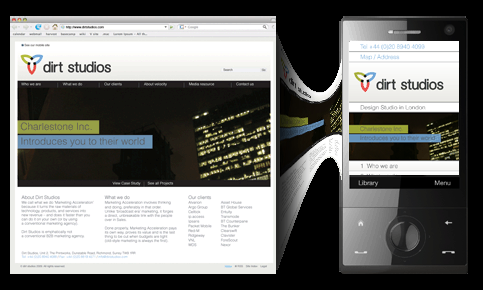 2008 was a year abounding in articles about mobile SEO and mobile sites. The buzz dropped down in the second half of the year; however the number of “mobile SEO” and “mobile site” inquiries is constantly rising – at least in my experience. I think an article about mobile SEO is even more justified today, as SitePoint has recently featured an article about Swift – a platform that enables anyone to create a mobile site.
2008 was a year abounding in articles about mobile SEO and mobile sites. The buzz dropped down in the second half of the year; however the number of “mobile SEO” and “mobile site” inquiries is constantly rising – at least in my experience. I think an article about mobile SEO is even more justified today, as SitePoint has recently featured an article about Swift – a platform that enables anyone to create a mobile site.
You’ve probably heard many “experts” advising you to optimize your site for mobile phones, or to create a “mobile” version of your site and optimize that for “mobile search.” The process has already been defined as “mobile SEO”, and there are already many SEO companies making money by “creating mobile sites” and doing “mobile SEO.”
I am not saying there is something wrong with creating a mobile site, however there are a few things you should know, that will probably save you a lot of trouble and money in the future.
First of all, you should know that you don’t need to purchase a .mobi domain to qualify your site for mobile platforms. A .com site will do just fine on mobile phones, and so will all other domain extensions too.
It’s true that image size has an important role to play in making a site “mobile friendly”, but reducing images or completely eliminating them is not mandatory. The iPhone loads images the same way a computer does, and so do a few other smart phones, like the Blackberry Storm. Sure, not all users browse the Web with smart phones, but its only a matter of time given the growth in mobile technology worldwide.
From a marketing perspective it is better to use the same URL for traditional and mobile sites: users will not have to remember two different URLs.
Additionally, using just one URL avoids the risk of creating duplicate content. It is pointless to create two different sites for the same content.
Traditional SEO best practices are also valid for “mobile SEO”, but in addition to these there are a few more steps to take to make a site mobile ready:
- It is advisable, not mandatory, to have W3C compliant XHTML code and pages that comply with the basic accessibility standards
- Submit your site to mobile search engines.
- Create dynamic mobile pages by combining your website’s content database with user agent detection. Transcoding the pages on the fly is a rather complex task, fit for a skilled programmer only. The smart phones of the future will NOT require this.
- When you search Google from your mobile you will see nearly the same search results as on your PC. This means that Google mobile search doesn’t list mobile sites preferentially.
In conclusion: if you were contemplating creating a mobile version of your site, it’s probably time to reconsider your endeavor. Back in 2006 when the “move” first started, this made sense: the mobile phones were not as advanced as today, and those that were advanced were not that affordable. In one more year all phones will have the ability to browse the web “smartly”, and users will probably not be interested in seeing trunked versions of a site.
Instead of planning to develop a “mobile” site, it would be better if you just stick to some basic principles of design: make your site all browsers compatible, make sure it is readable in any screen resolution, make it accessible for all and make sure it loads fast.
As for SEO, the traditional ways are still golden: relevant page titles, good page descriptions, good on page headlines, proper tagging, and of course quality links.
If you insist in creating a .mobi site, now you can do it at a fraction of the cost, by using dotMobi’s Instant Mobilizer, released recently. The software is added free to your package when you purchase a .mobi domain from any of the dotMobi partners listed on this page. On the same site, you can also test your site to see how it would look on a mobile phone.

To check whether your site will display on a mobile phone, visit ready.mobi.
If you have more ideas and thoughts about this subject, please join the conversation in the comments below.

